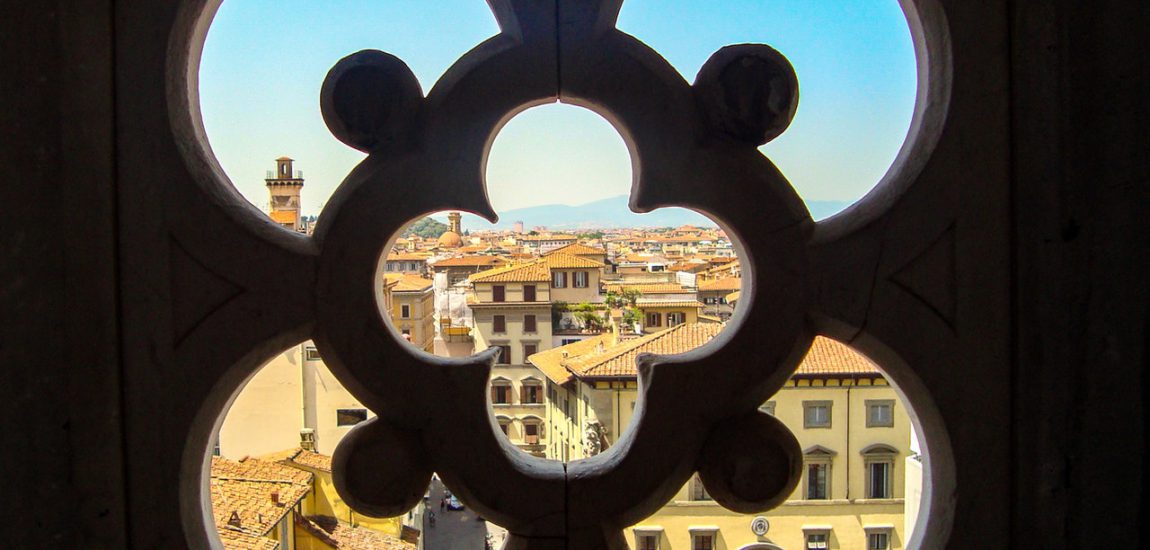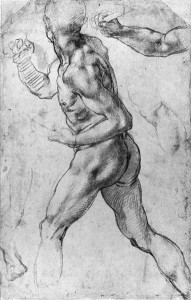
Masterpieces
The city of Florence is intimately tied to the Renaissance, when innovations in thinking and art drove Europe out of the dark ages intellectually, artistically and culturally. At the heart of this revolution, especially for art, was the Medici family. The patronage of this banking family helped develop art as we know it in modern times. I have spoken to several Goldschmidt attendees who took time out from the conference to go to one of Florence’s famous galleries. I went last weekend to the Accademia and Uffizi galleries, and contemplated the parallels between the art scene in Renaissance Florence and our experience of doing science. Here are some of my thoughts:
Money gets results. As I walked through the Accademia I could accurately guess the century in which a painting was produced based on the style. It was a striking transition from the pre-15th century paintings, in which the infant Jesus looks rather like a miniature man than a baby, to the depictions of human subjects with realistic proportions. Funding of artistic works resulted in the development of perspective and more realistic representations of natural and eventually, non-secular subjects. While painting and sculpting put food on the table for Renaissance artists, I suspect that passion and competition played some role in driving artistic styles forward, much as it does for us in driving our scientific developments. But in either Renaissance art or modern science, progress is much faster when the work and the workers are adequately funded.
“Multiple discovery”. Younger artists learned from the masters in Florence workshops, and many paintings I saw in the Uffizi gallery were credited to a workshop rather than an individual painter, based on the characteristic style of that workshop. I infer from this that mentorship was an important component to the success of the Renaissance, much as it is for training the next generation of scientists. These workshops were also concentrated in one city, where individuals and workshops could be stimulated by each other’s work. Goldschmidt brings the geochemical community together once a year, where we have a chance to see what others are producing, but we also live in a digital world where we are constantly exposed to new ideas. In the scientific sessions this week I noticed common themes and larger questions emerging in across individual presentations and sessions. This type of phenomenon is known as “multiple discovery”, illustrated by the simultaneous invention of calculus by both Newton and Leibniz. While some influential ideas are driven by individuals, other ideas and these emerge from multiple sources when the stage has been set by prior work, or technological innovations. I imagine that certain techniques and styles for the Renaissance were developed from multiple workshops at the same time.
Unfinished masterpieces. Not all Renaissance projects were successful, and many were never finished. The entire hall that leads up to David, perhaps the most famous statue of all time, is lined with forms emerging from marble – sculptures that Michelangelo did not finish. It seems even the masters could not always keep up with the workload, and had to put projects aside, even after significant groundwork. Another interesting story is the unfinished frescoe of a battle scene that Michelangelo was commissioned to paint in the Palazzo Vecchio in Florence. He secured a more lucrative commission from the Pope before it was finished. His rival Leonardo da Vinci also abandoned work on an adjacent fresco, another battle scene, after a failed experiment with a new paint mixture. This has some relevance for us as well – failures and unfinished projects are important roadblocks in determining the direction of the next project. After Michaelangelo abandoned the Palazzo Vecchio frescoe, he painted the ceiling

Now that the conference is over, I will head back to the “workshop” for another year. I have filled my notebook with scribbles of experiments to try, collaborations to follow up on. I know, having looked back at scribbles from the last Goldschmidt that some of these ideas will fail, be revised, or simply forgotten. But Goldschmidt provides the environment where ideas flourish, regardless of whether it occurs in the renaissance city of Florence or in Sacramento.
(Images from Wikipedia)
